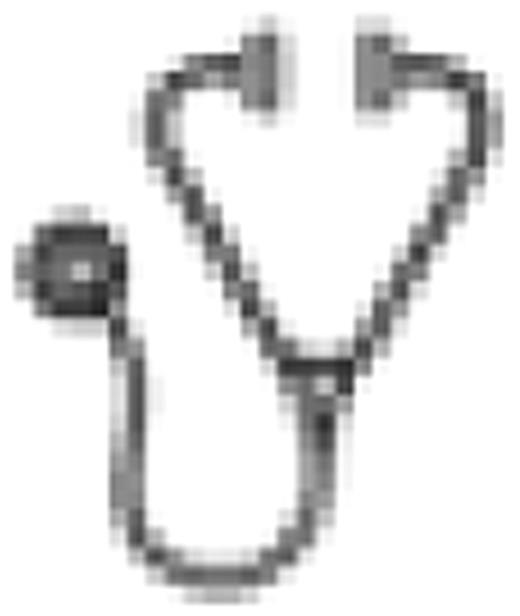Abstract
Abstract 4492
Patients undergoing allogeneic haematopoietic stem cell transplants frequently develop infections that are responsible for a high rate of morbidity and mortality during first 6 months post transplantation. The occurrence of CMV infection might reach 70% to 80% of transplanted patients; this rate is increased in HSC transplantations conditioned by in vivo and/or in vitro immunosuppressive treatment. Prophylactic treatment of CMV infection by ganciclovir or foscarnet, though proven to be efficient, faces complications such as myelotoxicity, nephrotoxicity and/or the development of virus resistance. The control of CMV reactivation is achieved in healthy individuals by CD4 +and CD8 +T lymphocytes specifically directed against CMV. After allograft, it has been demonstrated that restoration of anti-CMV immune responses is efficient but all the more delayed when conditioning is heavier. Furthermore, it has been demonstrated that the transfer of donor T lymphocytes specifically directed against CMV was able to prevent and even more to control viral reactivation. Several strategies have been described to generate anti-CMV CD8+ cytotoxic T lymphocytes (CTL) in vitro, by using as antigen-presenting cells (APCs) CMV-infected fibroblasts (Walter, NEJM 1995, 333: 1038), or EBV-transformed B cells retrovirally transduced to express CMV pp65 protein (Sun, Blood 1999, 94: 3242). However, the length of process and the presence of potentially dangerous viral particles in these trials limit their clinical utilisation. Recent progresses in technology resulting from the HLA tetramer technique have enabled to develop direct and fast enrichments of anti-CMV CTL sufficient to inject one or several doses of these lymphocytes (Cobbod abstract 155, ASH 2004).
In order to reach the regulatory requirements for ancillary products to be used in an anti CMV immunotherapy protocol, a tetramer selection system and its associated production process compatible with cGMP has been developed. The developed manufacturing process (Protein Expert) is based on: - the E. coli production of the different components, HLA201 heavy chain and β2 microglobulin as well as streptavidin, the chemical synthesis of the pp65 peptide; - the production and biotinylation of the monomers-the production of the tetramers using recombinant streptavidin covalently linked to magnetic beads (Miltenyi Biotec ®) compatible with clinical applications.
Seven immunomagnetical selections on MS column of HLA A2-pp65 positive tetramer cells from healthy blood donors were performed with these GMP reagents. Respective means of CD8 tetramer +cells in starting and selected fractions were 2.5 %(+/-3.1) and 99 %(+/-0.6).
| Expt . | Start . | Selected . | ||||
|---|---|---|---|---|---|---|
| CD8 tetramer+ cells (%) . | CD8 tetramer+ cells (10e5)) . | CD3 + cells (%) . | CD8 tetramer+ cells (%) . | CD8 tetramer+ cells (10e5) . | CD8 tetramer+ cells yield (%)) . | |
| 1 | 0,54 | 1,31 | 89 | 99 | 1,73 | 117 |
| 2 | 8,45 | 7,46 | 99 | 99 | 12,2 | 162 |
| 3 | 0,32 | 0,57 | 93 | 99 | 0,64 | 105 |
| 4 | 0,39 | 1,37 | 91 | 99 | 1,68 | 112 |
| 5 | 3,35 | 8,59 | 98 | 99,5 | 5,84 | 67 |
| 6 | 4,47 | 2,7 | 98 | 98 | 2,4 | 86 |
| 7 | 0,14 | 0,2 | 79 | 99,8 | 0,29 | 116 |
| Mean | 2,5 | 3,2 | 92,4 | 99,0 | 3,5 | 109,3 |
| SD | 3,1 | 3,4 | 7,1 | 0,6 | 4,2 | 29,6 |
| Expt . | Start . | Selected . | ||||
|---|---|---|---|---|---|---|
| CD8 tetramer+ cells (%) . | CD8 tetramer+ cells (10e5)) . | CD3 + cells (%) . | CD8 tetramer+ cells (%) . | CD8 tetramer+ cells (10e5) . | CD8 tetramer+ cells yield (%)) . | |
| 1 | 0,54 | 1,31 | 89 | 99 | 1,73 | 117 |
| 2 | 8,45 | 7,46 | 99 | 99 | 12,2 | 162 |
| 3 | 0,32 | 0,57 | 93 | 99 | 0,64 | 105 |
| 4 | 0,39 | 1,37 | 91 | 99 | 1,68 | 112 |
| 5 | 3,35 | 8,59 | 98 | 99,5 | 5,84 | 67 |
| 6 | 4,47 | 2,7 | 98 | 98 | 2,4 | 86 |
| 7 | 0,14 | 0,2 | 79 | 99,8 | 0,29 | 116 |
| Mean | 2,5 | 3,2 | 92,4 | 99,0 | 3,5 | 109,3 |
| SD | 3,1 | 3,4 | 7,1 | 0,6 | 4,2 | 29,6 |
Starting and selected cells were restimulated with CMV or irrelevant peptide and evaluated for interferon gamma secretion (respectively 5.4%+/5.2 and 71.8%+/-14.7) and CD107a expression (6.1%+/-2.9 and 56.2%+/-32.7).
The GMP reagents used for selection demonstrated a very good efficacy for enrichment of HLA A2-pp65 positive tetramer CD8 cells with high purity and yield. Selected cells were shown to be antigen specific and cytotoxic. This procedure scaled up on Clinimacs device could provide in a very short time, sufficient CD8 tetramer positive cells for very selective adoptive immunotherapy after stem cells transplant.
No relevant conflicts of interest to declare.
Author notes
Asterisk with author names denotes non-ASH members.

This feature is available to Subscribers Only
Sign In or Create an Account Close Modal